 Impala – blending in.
Impala – blending in.“Zimbabwe? Are you sure it’s safe?” In the weeks preceding my visit this question was asked of me time and time again, producing niggling doubts as to this wisdom of travelling to this southern African country.
It was reassuring (and a little surprising) to learn that normally risk-averse United States travellers are Zimbabwe’s most important source of visitors.
The Department of State issues a constant stream of detailed global travel warnings and even mainstream destinations like Kenya and Mexico rank high for potential dangers. Zimbabwe, however, barely receives a mention. Sure, citizens are advised that driving at night should be avoided, but this is due to livestock wandering on the road and not because of the threat of bandits or rogue army units. One’s also cautioned against taking photos of military barracks, but any sensible person would instinctively know that was not a particularly wise thing to do anywhere in the world.
Why Zimbabwe?
Given Zimbabwe’s reputation, it’s easy to forget that for 20 years following independence in 1980, it was Africa’s most prosperous country and one of the continent’s most popular tourist destinations. With a delightful climate, friendly and well-educated population, advanced infrastructure, beautiful landscape and a superb national park system, Zimbabwe had much going for it.
 But only a decade or so ago, Zimbabwe plunged into a state of economic chaos. Most of the largely white-owned commercial farms – once cornerstones of Zimbabwe’s economy, alongside tourism – were violently seized by senior government politicians, army officers and “war veterans” – men who may or may not have actually served in the guerrilla armies over 35 years ago. Cattle were slaughtered and crops went left unharvested, the banking system collapsed, investment dried up, economic sanctions were imposed and the Zimbabwean dollar became worthless, with inflation peaking at 80 billion percent in 2008, wiping out savings and making pensions meaningless. (The Zimbabwean currency was eventually replaced by the US dollar.)
But only a decade or so ago, Zimbabwe plunged into a state of economic chaos. Most of the largely white-owned commercial farms – once cornerstones of Zimbabwe’s economy, alongside tourism – were violently seized by senior government politicians, army officers and “war veterans” – men who may or may not have actually served in the guerrilla armies over 35 years ago. Cattle were slaughtered and crops went left unharvested, the banking system collapsed, investment dried up, economic sanctions were imposed and the Zimbabwean dollar became worthless, with inflation peaking at 80 billion percent in 2008, wiping out savings and making pensions meaningless. (The Zimbabwean currency was eventually replaced by the US dollar.)
Today, as one drives along the narrow, pot-holed highways, with but rare exceptions only basic subsistence agriculture is in evidence. Here and there stand groups of “rondavels” (traditional circular, thatched-roofed huts) alongside which are patches of maize, the odd cow, donkey and goat. But most of the once rich farmland has returned to bush, land that has long been completely sterile of any wildlife.
 During the decade of extreme economic crisis, Zimbabwe was pretty well off the tourist map but now visitors are gradually returning. Efforts to revive the industry are being led by both white and black Zimbabweans. White ex-farmers, their sons and daughters, are amongst those who have moved into tourism, reinventing themselves as bush pilots, lodge owners or managers, wildlife guides and even cooks. Sensibly they now stay clear of politics, memories of the white settler regime prior to independence in 1980 and of the high profile involvement of white Zimbabweans in post-independence politics having contributed to the demonisation of the entire community by the government of Robert Mugabe.
During the decade of extreme economic crisis, Zimbabwe was pretty well off the tourist map but now visitors are gradually returning. Efforts to revive the industry are being led by both white and black Zimbabweans. White ex-farmers, their sons and daughters, are amongst those who have moved into tourism, reinventing themselves as bush pilots, lodge owners or managers, wildlife guides and even cooks. Sensibly they now stay clear of politics, memories of the white settler regime prior to independence in 1980 and of the high profile involvement of white Zimbabweans in post-independence politics having contributed to the demonisation of the entire community by the government of Robert Mugabe.
Most white Zimbabweans have long abandoned the country, booted off their farms or no longer being able to count on jobs that had been either officially or unofficially reserved for them under white settler rule. In their new homes in South Africa, Britain, Australia and elsewhere, these unreconstructed Rhodesians grumble about how their former country has gone to the dogs, refusing to take any responsibility for a nation that was born from the divisions of a vicious war of liberation or accepting that their privileged places in society was entirely based on their whiteness.
Some whites, however, have stayed put, either by choice or force of circumstances, finding ways – often quite successfully – in business or (as is the case of many of the elderly) surviving thanks to remittances sent by family members who have moved abroad. Others, after leaving Zimbabwe, have returned, coming “home” with new skills and capital. No one really knows how many white Zimbabweans remain in the country. There may be around 20,000 and 30,000 left (down from a peak of 270,000 in the late 1960s), but many others refuse to entirely burn their bridges, maintaining one foot in Zimbabwe and another elsewhere in Southern Africa.
But while whites are certainly a conspicuous presence within the tourist sector, the bulk of the workers – at all levels – are black. Despite Zimbabwe’s many problems, its educational system still functions better than most in Africa, English is universally spoken and, with unemployment so high (by many accounts 80 percent of the population is not in formal work), there’s no shortage of skilled workers.
You can easily see why tourists are returning. Zimbabwe is beautiful and the country is actually far safer than many of its neighbours. Perhaps because there are still so few visitors, foreigners are made to feel extremely welcome, their presence an economic boon as well as breaking locals’ feeling of isolation.
There are genuinely no fears of terrorist actions (in contrast, sadly, to Kenya) and although it’s hard to ignore the harsh economic conditions, poverty has not resulted in “no-go areas” (of the kind found in pretty-well all South African cities).
During our time in Zimbabwe, we wandered on foot through city centres, got lost driving through high-density townships, and drove along main highways, as well as roads in rural backwaters, without even the remotest sense of danger.
Yes, negotiating with police who were seeking to impose “fines” for real or imagined traffic violations became tiresome, but otherwise when people processed our presence there were waves and smiles. (The most ridiculous excuse for being stopped was a faint coating of dust on our car’s tailgate. Only once did I feel uneasy: two seriously unpleasant policemen pulled beside me in an unmarked car in central Masvingo for not halting at a stop sign. This might have been reasonable, other than the fact the sign had, the police acknowledged, long since been stolen.)
Zimbabwe is a large country and we could only scratch the surface. I drove from Johannesburg, entering Zimbabwe at the notorious Beitbridge border crossing. After meeting my daughter in Harare and several days with old friends in the southern town Masvingo (in terms of tourism, a place best known for being near the ancient Great Zimbabwe ruins), we headed to the lowveld – the hot grasslands of Zimbabwe’s southeastern corner.
Malilangwe Wildlife Reserve
From time to time I get an enjoyable writing gig for a glossy travel and “lifestyle” magazine. “Luxury” travel is what the magazine is really all about and when reviewing hotels I have to somehow imagine myself to be a wealthy, excessively picky, European traveller. Admittedly this is no great hardship, but in the interests of transparency I’m explaining that the three nights and four days that we spent as guests of Zimbabwe’s most upscale safari lodge was sadly not due to the pulling power of The World Elsewhere blog!
 I never really fully unravelled the background of the Maliangwe Wildlife Reserve, but it goes something like this….
I never really fully unravelled the background of the Maliangwe Wildlife Reserve, but it goes something like this….
In 1949 Ray Sparrow acquired a 130,000 acre (over 500 square kilometers) property, near the town of Chiredzi, establishing the Lone Star Ranche [sic]. Whether the property had humans living on it at this time isn’t clear, but ancient rock paintings and evidence of grain having once been grown suggests that at tribal peoples did once inhabit some of the area.
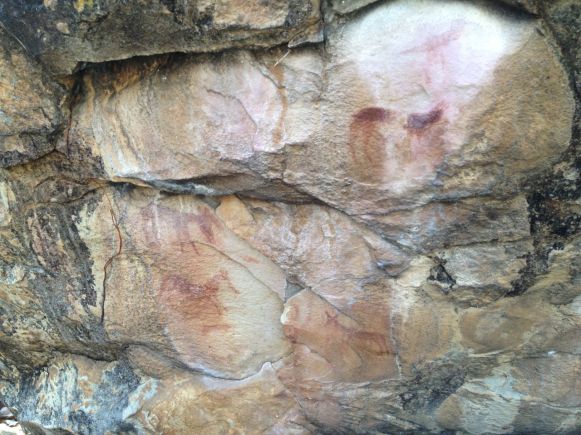 Raising cattle in the lowveld was a constant battle against periods of extreme heat, too much rain, drought, tsetse flies, malaria, lions, leopards, hyenas and wild dogs. By building dams, managing water holes and adopting the local custom of not dehorning the cattle to give them some defense against predators, ranching activities ticked over. In the 1970s Sparrow launched hunting safaris, producing an income that, paradoxically, was the only practical means to safeguard wildlife on his property.
Raising cattle in the lowveld was a constant battle against periods of extreme heat, too much rain, drought, tsetse flies, malaria, lions, leopards, hyenas and wild dogs. By building dams, managing water holes and adopting the local custom of not dehorning the cattle to give them some defense against predators, ranching activities ticked over. In the 1970s Sparrow launched hunting safaris, producing an income that, paradoxically, was the only practical means to safeguard wildlife on his property.
In 1994, Sparrow – then in his 70s – sold his ranch for the creation of the Malilangwe Wildlife Reserve, with Paul Tudor Jones, a billionaire New York hedge fund manager, being the main bankroller behind the Zimbabwean trust that owns the property. (Sparrow remained living in his old home until his death, in 2014, at the age of 92.)
 The attractions of this vast stretch of land were many. Cattle had wreaked considerable damage to the land, but as Sparrow had been actively promoting the conservation, wildlife was much more widespread than would normally be expected of a cattle ranch. Furthermore the property was alongside Gonarezhou National Park, with animals crossing unhindered between the two reserves. This, however, was also problematic.
The attractions of this vast stretch of land were many. Cattle had wreaked considerable damage to the land, but as Sparrow had been actively promoting the conservation, wildlife was much more widespread than would normally be expected of a cattle ranch. Furthermore the property was alongside Gonarezhou National Park, with animals crossing unhindered between the two reserves. This, however, was also problematic.
Located alongside the border with Mozambique, Gonarezhou was for years neglected having been on the front line during the “Zimbabwe War of Liberation” (or “Rhodesian Bush War”, 1964–79) and then again during the Mozambican civil war (1977–92). Combatants slaughtered animals and by the time the park reopened in 1994, elephants had all but been wiped out from Gonarezhou – the name meaning “place of elephants”.
Today the Malilangwe Wildlife Reserve is completely ringed by a high-voltage electric fence and patrolled by some 85 armed rangers, keeping animals in and poachers out. The Trust has demonstrated that, with sufficient levels of investment and dedication, it’s possible to return an environmentally fragile area back into a place of tremendous biodiversity.
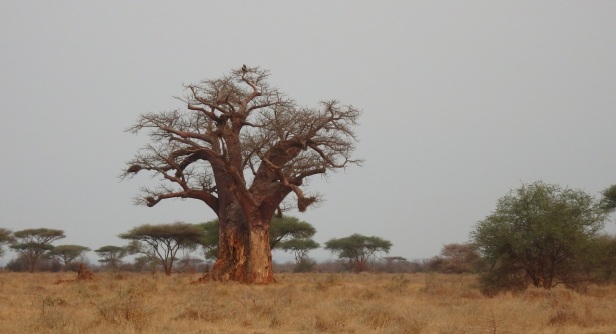 Baobob tree.
Baobob tree.The landscape of grassland, bush, mopane forest, acacia woods and ancient baobob trees, is ideal for grazing animals. Malilangwe holds one of the largest concentrations of both black and white rhino left in Africa, something that the reserve is intensely proud of, but is also a constant cause for concern. (In South Africa’s neighbouring Kruger National Park, an incredible two or three rhinos are lost each day to poachers. Malilangwe’s high security fencing and armed guards are absolute necessities.) Scattered across the reserve are rocky outcrops from where lions and leopards watch over potential prey, and caves that serve as perfect lairs for hyena clans. All in all, this a rather cushy home for wildlife.
 A white rhino – the difference between this and the black rhino lies in the shape of their jaws.
A white rhino – the difference between this and the black rhino lies in the shape of their jaws.The long-term dream is to remove the fence separating Malilangwe Reserve from Gonarezhou National Park. Given, however, Zimbabwe’s fragile state, and frighteningly high levels of poaching in both Mozambique’s adjoining Parque Nacional do Limpopo and nearby Kruger National Park, it’s hard to imagine this becoming a reality: until China gets a grip on demand for elephant tusks and rhino horn, there’s potentially too much money to be made.
Pamushana
To help support its conservation efforts, Malilangwe offers, for a price, relatively low-impact luxury tourism, the profits that are generated being used to preserve the wildlife and to support local community development schemes, helping local people whose long-term cooperation is essential for the reserve to prosper.
Guests stay at the ultra luxurious Pamushana lodge, spectacularly perched on a rocky hilltop overlooking the flooded Nyamasikana gorge. Pamushana was created in 1998 and since 2008 it has been operated by the Cape Town-based Singita safari group, known for its ultra luxurious lodges in South Africa and Tanzania.
 The main building and the individual accommodation units are fashioned from local stone with roofs thatched with elephant-grass. From the large infinity pool and the terraces of the main building, we viewed hippos and elephants bathing in the lake below and watched eagles soar overhead, and as we strolled to and from our guesthouse there were adorable rock dassies (or rock hyrax) jumping from roof-to-roof and sleek little klipspringer antelopes leaping from rock-to-rock just meters from us.
The main building and the individual accommodation units are fashioned from local stone with roofs thatched with elephant-grass. From the large infinity pool and the terraces of the main building, we viewed hippos and elephants bathing in the lake below and watched eagles soar overhead, and as we strolled to and from our guesthouse there were adorable rock dassies (or rock hyrax) jumping from roof-to-roof and sleek little klipspringer antelopes leaping from rock-to-rock just meters from us.
 Klipspringer antelope.
Klipspringer antelope.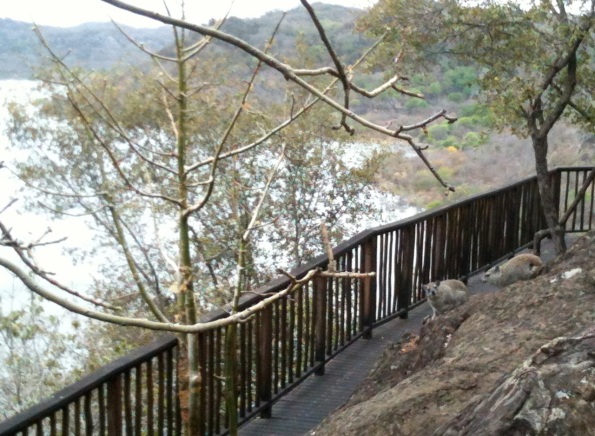 Rock dassies.
Rock dassies.The food – from the dawn snacks offered before the morning game drive, to the main evening meal – is amazing, the wine cellar (with pretty-well all drinks included in the price) would more than match that of the best restaurants in sophisticated Cape Town and the service is almost overwhelming (though never uncomfortably servile).
 Game viewing follows a pattern familiar to safari lodges, setting out in the cool of the early morning and again late in the afternoon when animals are at their most active. But what particularly marks Zimbabwe’s drives is the quality of the guides – so central to a safari experience. The country has always been known for having the best professional guides in Africa, products of a rigorous training programme that takes years to complete.
Game viewing follows a pattern familiar to safari lodges, setting out in the cool of the early morning and again late in the afternoon when animals are at their most active. But what particularly marks Zimbabwe’s drives is the quality of the guides – so central to a safari experience. The country has always been known for having the best professional guides in Africa, products of a rigorous training programme that takes years to complete.
 Mark, our guide.
Mark, our guide.As the reserve is certainly no zoo, there’s no guarantee that you’ll tick-off all the animals that you might be hoping for. On one of our drives, we spent hours with our guide, Mark, patiently tracking a lioness that he sensed was returning to its newborn cub. It was remarkable to just observe Mark – a Zimbabwean who had spent a decade working as a police officer in England tracking criminals – picking up clues from the bush. Despite not actually finding that particular lion, on that day alone we managed to see plenty of other animals, including hyenas, nyalas, giraffes, buffalo, zebras, elephants, rhinos and innumerable impalas. Apart from simply admiring the landscape and the wildlife, we learnt a few rather basic things.
We now know that buffalos are far more likely to attack a person than a lion; that cute little rock hyraxes are closely related to elephants and manatees; that hippos can’t swim; that baobob trees have a fibrous structure similar to celery, can live to a thousand years or more and then suddenly collapse; that zebras are utterly uncooperative as photo models. The hyenas, always seemingly oblivious to visitors, stand out somewhat uncomfortably in my memory for their white dung (a consequence of the bones that they crunch) and for the fact that both males and females have a long, dangly, penis!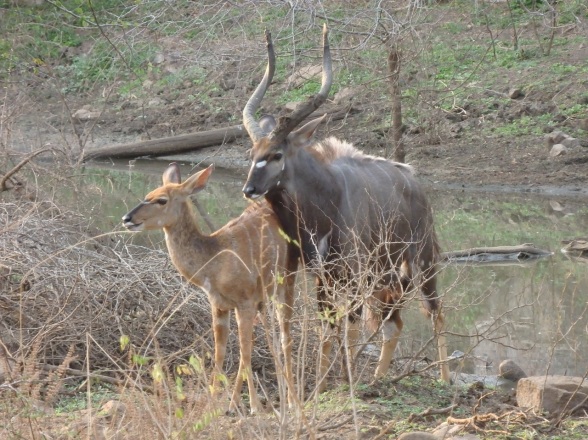 Nyalas.
Nyalas. Buffalos – beware!
Buffalos – beware!

Knowing that Pamushana guests pay a whopping US$1,380 per person per night, visiting the community projects is unsettling. (Zimbabwe’s GDP per capita is less than US$1,000 and it’s a safe bet that the great majority of people in the rural southeast of the country earn much less.)
Still, outreach is fundamental to the work of Malilangwe, trying to get locals to understand the work of the reserve, a place that most people will see no more of than the high electric fense. As most Pamushana visitors fly directly to the reserve from Johannesburg, the community projects are the only glimpse of a rather more “real” Zimbabwe that they’ll see….assuming that they choose to leave, if only for a few hours, the comforts of the lodge.
The Malilangwe Trust supports over 400 feeding centres, with local women preparing a special high-energy porridge for 19,000 children – presumably at a cost of what a couple of guests spend for a night at Pamushana. The Trust also pays for small-scale irrigation schemes, encourages and assists local women to grow provisions and has refurbished health clinics schools.

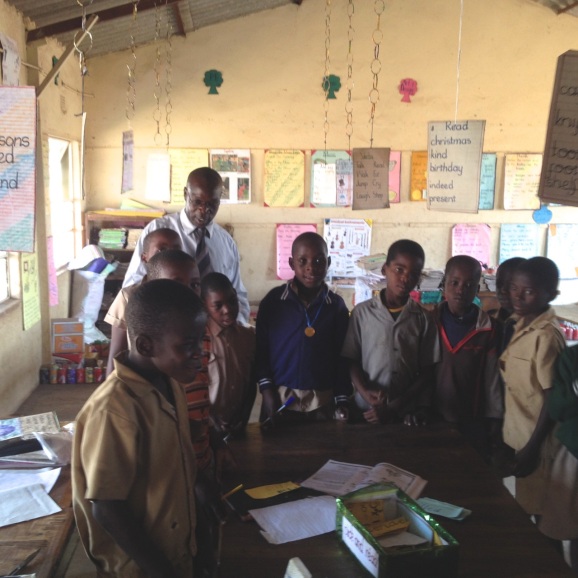 While all this is useful for the image of Malilangwe, it’s the popular environmental education programme that gives locals an understanding of what goes on beyond the fence. All local children in their last year of primary spend a week at the reserve to learn to appreciate the importance of protecting the region’s flora and fauna. Until then, their experience of African wildlife is likely to have been completely non-existent – and in all likelihood this will be their only exposure.
While all this is useful for the image of Malilangwe, it’s the popular environmental education programme that gives locals an understanding of what goes on beyond the fence. All local children in their last year of primary spend a week at the reserve to learn to appreciate the importance of protecting the region’s flora and fauna. Until then, their experience of African wildlife is likely to have been completely non-existent – and in all likelihood this will be their only exposure.
Practicalities
The best time to visit is the dry season (April until early November) when animals congregate at water holes and vegetation is less dense. Taking antimalarial tablets in this part of Zimbabwe is sensible precaution.
Pamushana Lodge has a maximum capacity of 30 guests – but there area rarely more than 20 visitors at any one time. There are four 1-bedroom suites, a 2-bedroom family suites, a 3-bedroom family suite and a 5-bedroom villa. The rate is US$1,380 per person per night, though if you fill the 3-bedroom suite or villa the rate per person is reduced a tad. Included is just about everything – meals, snacks, drinks, international phone calls….and wildlife drives or walks. Only French Champagne and spa treatments are charged separately.
You’re likely to be tempted by the selection on sale of beautiful jewellery and decorative items made by the Zimbabwean silversmith Patrick Mavros and his team…especially if you can’t make it to his lovely atelier located just outside of Harare. You could spend thousands of dollars on a single item, though some cost less US$100.
If you decide to stop over in Harare, the only hotel to remotely meet Pamushana’s standards is Meikles, a superb, long-established, city institution.
Reaching Pamushana from Harare usually involves chartering a light aircraft (US$1,800 per plane, one way) to the airstrip on the Malilangwe Wildlife Reserve. (There’s been talk of Air Zimbabwe reintroducing commercial service to the nearby Buffalo Range Airport, but when or if these will commence is anyone’s guess.)
Most guests bypass Harare altogether, instead flying from Johannesburg to Buffalo Range Airport (US$700, return, subject to a minimum of two guests staying for at least three nights). Alternatively, should you happen to have your own jet, arrangements can be made to fly into the airport from anywhere in the world.
We arrived by car – as possibly the first guests to drive into the Reserve in a Nissan Micra! It takes 6 or 7 hours to drive from Harare and it took us a total of around 12 hours to drive back to Johannesburg.
Photo credits
Photos by Anneliese Doyle (except the view of the Pamushana Lodge, courtesy of Singita and view of pool, by Oliver Marshall).






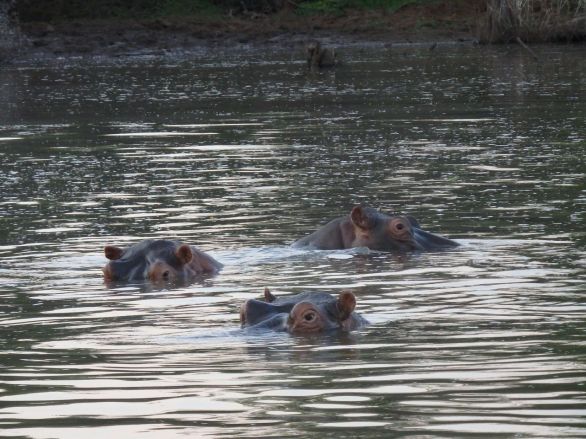


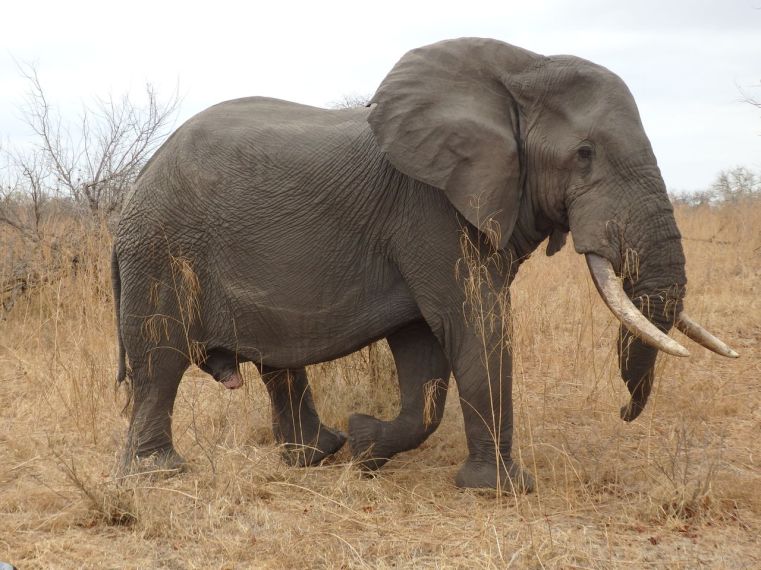
A superb informative evaluation, cutting the edge, enjoying it and sharing with friends. Waiting for the next article from you and theworldelsewhere.
Thank you Marshall.
LikeLiked by 1 person
I very much appreciate your kind comments. As you could probably tell, I had an amazing time in Zimbabwe and will certainly return sometime soon!
LikeLike
Great Article Oliver, Pumushana does a lot of good for the Zimbabwean people and made the top 10 lodges in Zimbabwe list. Have a look at http://www.jenmansafaris.com/top-10-lodges-of-zimbabwe-jenman/
LikeLiked by 1 person
Yours is a wonderful list of lodges, offering contrasting experiences. Reading the descriptions and watching the videos makes me want to return to Zimbabwe sometime soon.
LikeLike
A detailed sensitive account of Zimbabwe, one that makes me feel like visiting it right away. And what a treat the superb pictures taken by Anneliese. Thank you both for sharing such magical moments
LikeLike
Thank you for your nice words. Maybe some day you’ll visit Southern Africa….you can do it in a far cheaper (and more authentic) way without having to rough it!
LikeLike
Reblogged this on aliceisin.
LikeLiked by 1 person
So special to read about Lone Star Ranch and Ray Sparrow.
My family was good friends with Ray Sparrow and the rest of the family “the Sparrows” at the ranch and i was so lucky to visit Ray and the Sparrow family back in 1990 at the Lone Star Ranch while i was travelling Zimbabwe and South Africa visiting my familiy living in both countries.
I remember clearly Ray Sparrow and the Ranch where we were driving around watching a lot of wildlife and also the wild animals at the ranch which they were taking care of.
Thanks for bringing back memories.
LikeLiked by 1 person
Thank so much for commenting! I wish I had been able to find out more about Ray Sparrow. Maybe in the future I’ll pursue this….
LikeLike